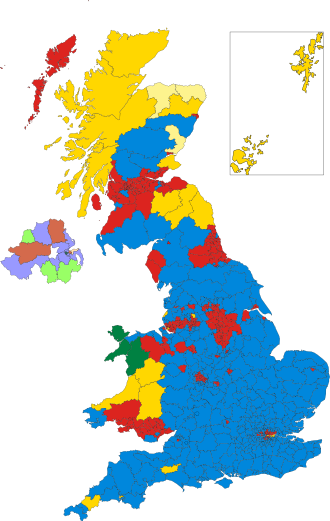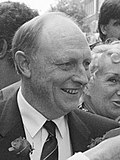UK General Election, 1987
|
|
|||||||||||||||||||||||||||||||||||||||||||||||||
|---|---|---|---|---|---|---|---|---|---|---|---|---|---|---|---|---|---|---|---|---|---|---|---|---|---|---|---|---|---|---|---|---|---|---|---|---|---|---|---|---|---|---|---|---|---|---|---|---|---|
|
|||||||||||||||||||||||||||||||||||||||||||||||||
|
|
|||||||||||||||||||||||||||||||||||||||||||||||||
|
All 650 seats in the House of Commons 326 seats needed for a majority |
|||||||||||||||||||||||||||||||||||||||||||||||||
| Turnout | 75.3% ( |
||||||||||||||||||||||||||||||||||||||||||||||||
|
|||||||||||||||||||||||||||||||||||||||||||||||||

Colours denote the winning party, as shown in the main table of results.
|
|||||||||||||||||||||||||||||||||||||||||||||||||
|
|||||||||||||||||||||||||||||||||||||||||||||||||
| 1979 election • MPs |
| 1983 election • MPs |
| 1987 election • MPs |
| 1992 election • MPs |
| 1997 election • MPs |
The United Kingdom general election of 1987 was held on 11 June 1987, to elect 650 members to the British House of Commons. The election was the third consecutive election victory for the Conservative Party under the leadership of Margaret Thatcher, who became the first Prime Minister since the 2nd Earl of Liverpool in 1820 to lead a party into three successive election victories.
The Conservatives ran a campaign focusing on lower taxes, a strong economy and strong defence. They also emphasised that unemployment had fallen below the 3,000,000 mark for the first time since 1981, and inflation was standing at 4%, its lowest level for some twenty years. The tabloid media also had strong support for the Conservative Party, particularly The Sun, which ran anti-Labour articles with headlines such as: Why I'm backing Kinnock, by Stalin.
The Labour Party, led by Neil Kinnock, was slowly moving towards a more centrist policy platform. The main aim of the Labour Party was, arguably, simply to re-establish themselves as the main progressive centre-left alternative to the Conservatives, after the rise of the Social Democratic Party (SDP) forced Labour onto the defensive. Indeed, the Labour Party succeeded in doing so at this general election. The Alliance between the Social Democratic Party and the Liberal Party was renewed but co-leaders David Owen and David Steel could not agree whether to support either major party in the event of a hung parliament.
...
Wikipedia




